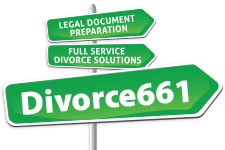How Long Do You Have To Be Married To Get Spouses Social Security
Tim: Now there are some requirements as far as length of marriage, is that correct? Can you give us some details on that?
Janelle: Yes. You have to be married at least ten years to be able to claim this in both situations.
So if you’re close to the ten year point, you might want to delay a little bit just to give yourself the option as being able to claim that their benefits as well.
Tim: So with these ten years rules, ten years in a day and this is applicable to them?
Janelle: Yes.
Tim: Okay.
Janelle: Uh-huh.
Tim: So it’s definitely something they’ll want to consider when going through divorce if you’re over ten years to see how that place out.
Can you get copies from the state as far as your disability payments will they give you?
Janelle: For this Social Security go to the Social Security website—
Tim: For Social Security. Uh-huh.
Janelle: So they’ll go in the website and you can get a copy of yours and your spouse’s benefits, and so they’re going to be—
Tim: You can. This is as simple as going online?
Janelle: Yeah you have to create an account for yourself but yeah you can go online.
Tim: Okay.
Janelle: or else call the Social Security Department but it’s easier to usually go online.
Tim: Got yeah. Okay.
